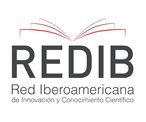British Coins in the Iron Age: The Influence of Philip II of Macedon on the Construction of Celtic Coinage
DOI:
https://doi.org/10.26512/emtempos.v24i45.56431Keywords:
Monetary Iconography, Numismatic Documentation, British IslesAbstract
This article examines the techniques and symbols used on Celtic coins, highlighting the influence of imitation coinage by Philip II of Macedon (late 4th century BC) on the creation of Celtic coinage. The analysis is conducted from the methodological perspective of numismatics through the theoretical framework of historical archaeology and material culture studies, which includes the classification, typology and interpretation of coins as historical sources. This study looks in particular at representations of iconographic motifs of deities, horses and riders, as
well as more abstract forms, exploring their meanings in the context of insular Celtics. The work highlights how the introduction of Mediterranean minting techniques and ideas impacted coin production in Great Britain, emphasizing a complex interaction between different monetary cultures.
Downloads
References
BENDREY, Robin; LEACH, Stephany; CLARK, Kate. New light on an old rite: Reanalysis of an Iron Age burial group from Blewburton Hill, Oxfordshire. In:MORRIS, James; MALTBY, Mark. Integrating Social and Environmental Archaeologies: Reconsidering Deposition. Oxford: BAR Publishing, 2010.
CARLAN, Claudio Umpierre; FUNARI, Pedro Paulo. Moedas: A Numismática e o estudo da História. São Paulo: Annablume, 2012.
CHAPMAN, Malcom. The Celts: The construction of a myth. Londres: Macmillan,1992.
COELHO, Lincoln Mansur.; MARQUES, Adílio Jorge. The numismatics on antiquity as a developing element of historical consciousness. Research, Society and Development, [S. l.], v. 9, n. 3, p.1-18. jan. 2020.
COLLIS, John. Celtic myths. Antiquity. Cambridge, v. 71 n. 271, p. 195-201, mar. 1997.
CREIGHTON, John. Coins and Power in the Late Iron Age Britain. Cambridge: Cambridge University Press, 2000.
CUNLIFFE, Barry. The Celts: A Very Short Introduction. [S. l.]: Oxford University Press, 2003.
DA COSTA, Lorena Lopes. A Falsificação e o Teatro Grego: Duas Faces da Mesma Moeda. Phoînix, Rio de Janeiro, v. 22, n. 2, p. 43-58, 2016.
DE JERSEY, Philip. Celtic Coinage in Britain. Londres: Shire Publications, 1996.
GARROW, Duncan; GOSDEN, Chris. Technologies of Enchantment?: Exploring Celtic Art: 400 BC to AD 100. Oxford: Oxford University Press, 2012.
GREEN, Miranda. Animals in Celtic Life and Myth. Londres: Routledge, 2002.
GREEN, Miranda. Celtic art. Londres: Weidenfeld & Nicolson, 1996.
JAMES, Simon. Celts, politics and motivation in archaeology. Antiquity, Cambridge, v. 72, n. 275, p. 200-209, mar. 1998.
KEMMERS, Fleur; MYRBERG, Nanouschka. Rethinking numismatics. The archaeology of coins. Archaeological Dialogues, Cambridge, ano 1, v. 18, p. 87-108, 2011. DOI 10.1017/S1380203811000146
LINDUFF, Katheryn M. Epona : a Celt among the Romans. Latomus: Societe d’Etudes Latines de Bruxelles, [s. l.], v. 38, p. 817-837, 1979.
MATTINGLY, David. An Imperial Possession: Britain in the Roman Empire. Londres: Penguin Books, 2007.
MEGAW, John Vincent Stanley; MEGAW, M.Ruth. Ancient Celts and modern ethnicity. Antiquity, Cambridge, v. 70 n. 267, p. 175-181, mar. 1996.
MEGAW, John Vincent Stanley; MEGAW, M.Ruth. The mechanism of (Celtic) dreams?: A partial response to our critics. Antiquity, Cambridge, v. 72 s.n., p. 432-435, jun. 1998.
RUDD, Chris. Ancient British Coins. Norwich: Chris Rudd Norwich, 2010.
TÁCITO. Complete Works of Tacitus. Tradução: Alfred John Church e William Jackson Brodribb. Nova York: Random House, 1942.
WADDELL, John. Equine Cults and Celtic Goddesses. EMANIA: Bulletin of the Navan Research Group, [s. l.], n. 24, 2018.
Downloads
Published
How to Cite
Issue
Section
License
Copyright (c) 2025 Em Tempo de Histórias

This work is licensed under a Creative Commons Attribution-NonCommercial 4.0 International License.
Autores que publicam nesta revista concordam com os seguintes termos:
- Autores mantém os direitos autorais e concedem à revista o direito de primeira publicação, sendo o trabalho simultaneamente licenciado sob a Creative Commons Attribution License , licença que permite que outros remixem, adaptem e criem a partir do seu trabalho para fins não comerciais, e embora os novos trabalhos tenham de lhe atribuir o devido crédito e não possam ser usados para fins comerciais, os usuários não têm de licenciar esses trabalhos derivados sob os mesmos termos.
- Autores têm autorização para assumir contratos adicionais separadamente, para distribuição não-exclusiva da versão do trabalho publicada nesta revista (ex.: publicar em repositório institucional ou como capítulo de livro), com reconhecimento de autoria e publicação inicial nesta revista.
- Autores têm permissão e são estimulados a publicar e distribuir seu trabalho online (ex.: em repositórios institucionais ou na sua página pessoal) a qualquer ponto antes ou durante o processo editorial, já que isso pode gerar alterações produtivas, bem como aumentar o impacto e a citação do trabalho publicado (Veja O Efeito do Acesso Livre).













